Cloud Computing Is Replacing Enterprise Hardware And Software. Will It Kill Data Centre Jobs In The Coming Days ?
Mar 18, 2019 • 281 views
“Cloud is about how you do computing, not where you do computing.”
With each passing day, we see more and more technology moving towards the cloud. It’s not just a fad — the shift from traditional software models to the internet has steadily gained momentum over the last 10 years. Looking ahead, the next decade of cloud computing promises new ways to collaborate everywhere, through mobile devices.
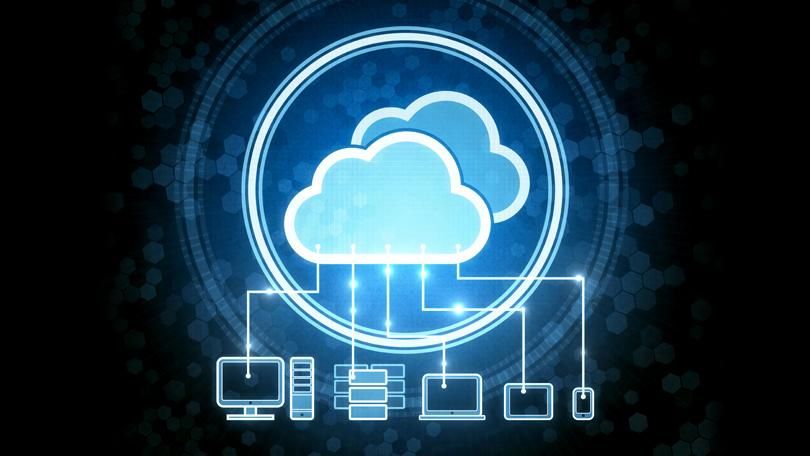
So what is cloud computing? Essentially, cloud computing is a kind of outsourcing of computer programs. Using cloud computing, users are able to access software and applications from wherever they are; the computer programs are being hosted by an outside party and reside in the cloud. This means that users do not have to worry about things such as storage and power, they can simply enjoy the end result.
Cloud Computing provides us means by which we can access the applications as utilities over the internet. It allows us to create, configure, and customize the business applications online.
The term Cloudrefers to aNetworkorInternet.In other words, we can say that Cloud is something, which is present at remote location. Cloud can provide services over public and private networks, i.e., WAN, LAN or VPN.
Applications such ase-mail, web conferencing, customer relationship management (CRM) execute on cloud.

With increase in computer and Mobile user’s, data storage has become a priority in all fields. Large and small scale businesses today thrive on their data & they spent a huge amount of money to maintain this data. It requires a strong IT support and a storage hub. Not all businesses can afford high cost of in-house IT infrastructure and back up support services. For them Cloud Computing is a cheaper solution. Perhaps its efficiency in storing data, computation and less maintenance cost has succeeded to attract even bigger businesses as well.
Cloud computing decreases the hardware and software demand from the user’s side. The only thing that user must be able to run is the cloud computing systems interface software, which can be as simple as Web browser, and the Cloud network takes care of the rest. We all have experienced cloud computing at some instant of time, some of the popular cloud services we have used or we are still using are mail services like gmail, hotmail or yahoo etc.
It is less important whether cloud services are based on HTTP, XML, Ruby,PHPor other specific technologies as far as it is user friendly and functional. An individual user can connect to cloud system from his/her own devices like desktop, laptop or mobile.
Benefits of Cloud Computing
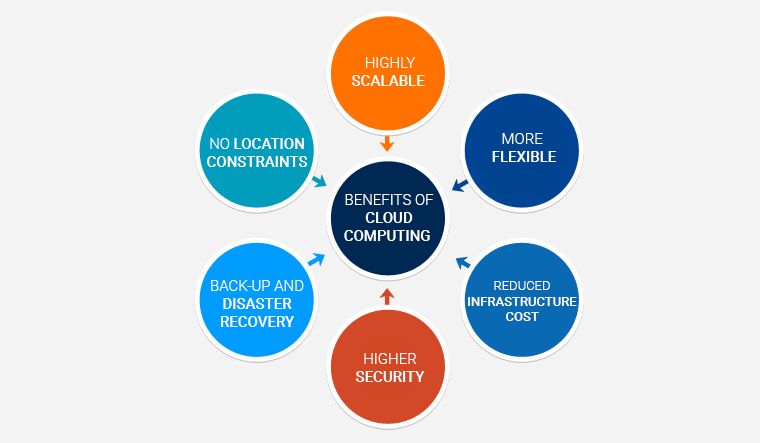
1. Less Costs
The cloud services are free from capital expenditure. There are no huge costs of hardware in cloud computing. You just have to pay as you operate it and enjoy the model based on your subscription plan.
2. Do more with less
With cloud computing, companies can reduce the size of their own data centers — or eliminate their data center footprint altogether.
3. Always-on availability
Most cloud providers are extremely reliable in providing their services, with many maintaining 99.99% uptime. The connection is always on and as long as workers have an Internet connection, they can get to the applications they need from practically anywhere. Some applications even work off-line.
4. Improved mobility
Workers can take their workanywherevia smart phones and tablets—roaming through a retail store to check customers out, visiting customers in their homes or offices, working in the field or at a plant, etc.
5. Cloud computing is more cost effective
Because companies don’t have to purchase equipment and build out and operate a data center, they don’t have to spend significant money on hardware, facilities, utilities and other aspects of operations. With traditional computing, a company can spend millions before it gets any value from its investment in the data center.
6. Security
Cloud computing offers great security when any sensitive data has been lost. As the data is stored in the system, it can be easily accessed even if something happens to your computer. You can even remotely wipe out data from the lost machines for avoiding it getting in the wrong hands.
7. Automated Updates on Software
In cloud computing, the server suppliers regularly update your software including the updates on security, so that you do not need to agonize on wasting your crucial time on maintaining the system.

There are four different cloud models that you can subscribe according to business needs:
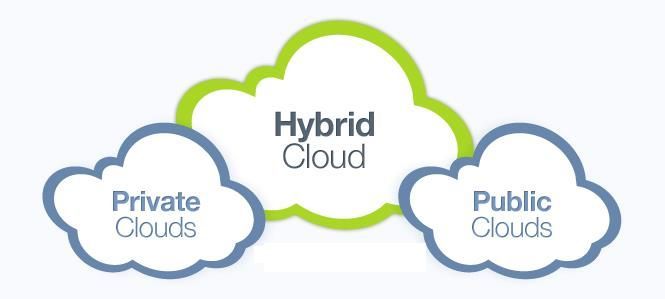
1.Private Cloud:Here,computing resources are deployed for one particular organization.This method is more used for intra-business interactions.Where the computing resources can be governed, owned and operated by the same organization.
2.Community Cloud:Here,computing resources are provided for a community and organizations.
3.Public Cloud:This type of cloud is used usually for B2C (Business to Consumer) type interactions.Here the computing resource is owned, governed and operated by government, an academic or business organization.
4.Hybrid Cloud:This type of cloud can be used for both type of interactions -B2B (Business to Business) or B2C ( Business to Consumer). This deployment method is called hybrid cloud as the computing resources are bound together by different clouds.
Cloud Computing Services
The three major Cloud Computing Offerings are
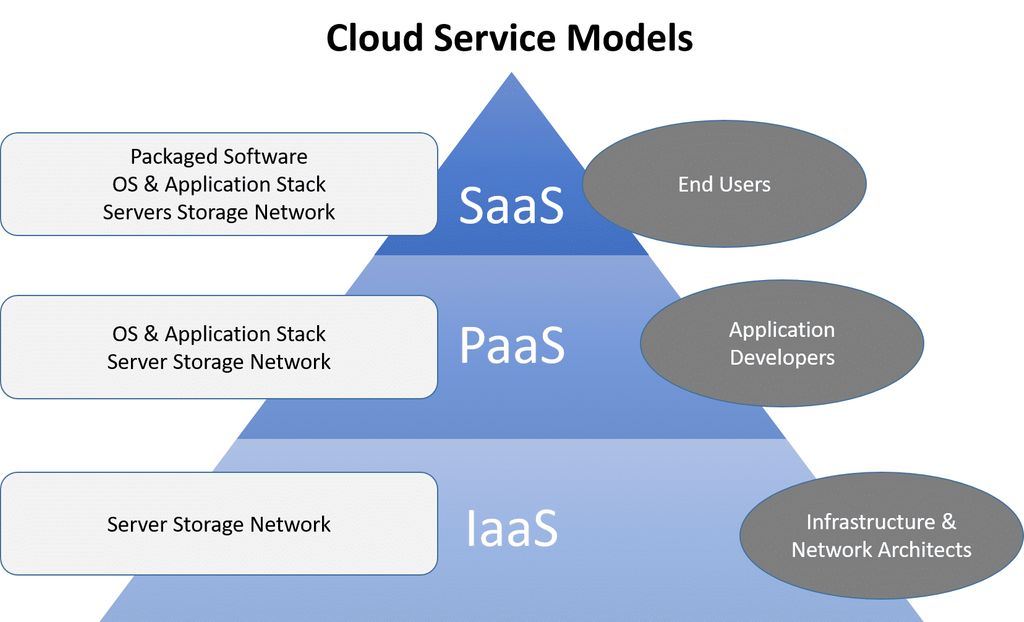
Software as a Service (SaaS)
SaaS or software as a service is a software distribution model in which applications are hosted by a vendor or service provider and made available to customers over a network (internet).
Platform as a Service (PaaS)
Platform as a service, is referred as PaaS, it provides a platform and environment to allow developers to build applications and services. This service is hosted in the cloud and accessed by the users via internet.
Infrastructure as a Service (IaaS)
IaaS (Infrastructure As A Service) is one of the fundamental service model of cloud computing alongside PaaS( Platform as a Service). It provides access to computing resources in a virtualized environment “the cloud” on internet.It provides computing infrastructure like virtual server space, network connections, bandwidth, load balancers and IP addresses. The pool of hardware resource is extracted from multiple servers and networks usually distributed across numerous data centers.This provides redundancy and reliability to IaaS.
Architecture of Cloud Computing
Cloud computing comprises of two components front end and back end.

Front end consist client part of cloud computing system. It comprise of interfaces and applications that are required to access the cloud computing platform.
While back end refers to the cloud itself, it comprises of the resources that are required for cloud computing services. It consists of virtual machines, servers, data storage, security mechanism etc. It is under providers control.
Privacy Concern & Cloud Computing
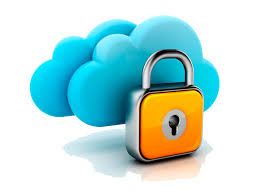
There are certain measures which can improve privacy in cloud computing.
1.The administrative staff of the cloud computing service could theoretically monitor the data moving in memory before it is stored in disk.To keep the confidentiality of a data, administrative and legal controls should prevent this from happening.
2.The other way for increasing the privacy is to keep the data encrypted at the cloud storage site, preventing unauthorized access through the internet; even cloud vendor can’t access the data either.
Have a question??You canfollow me on Instagram(@tanzilmahmood)and ask your travel questions in a direct message on Instagram too.
